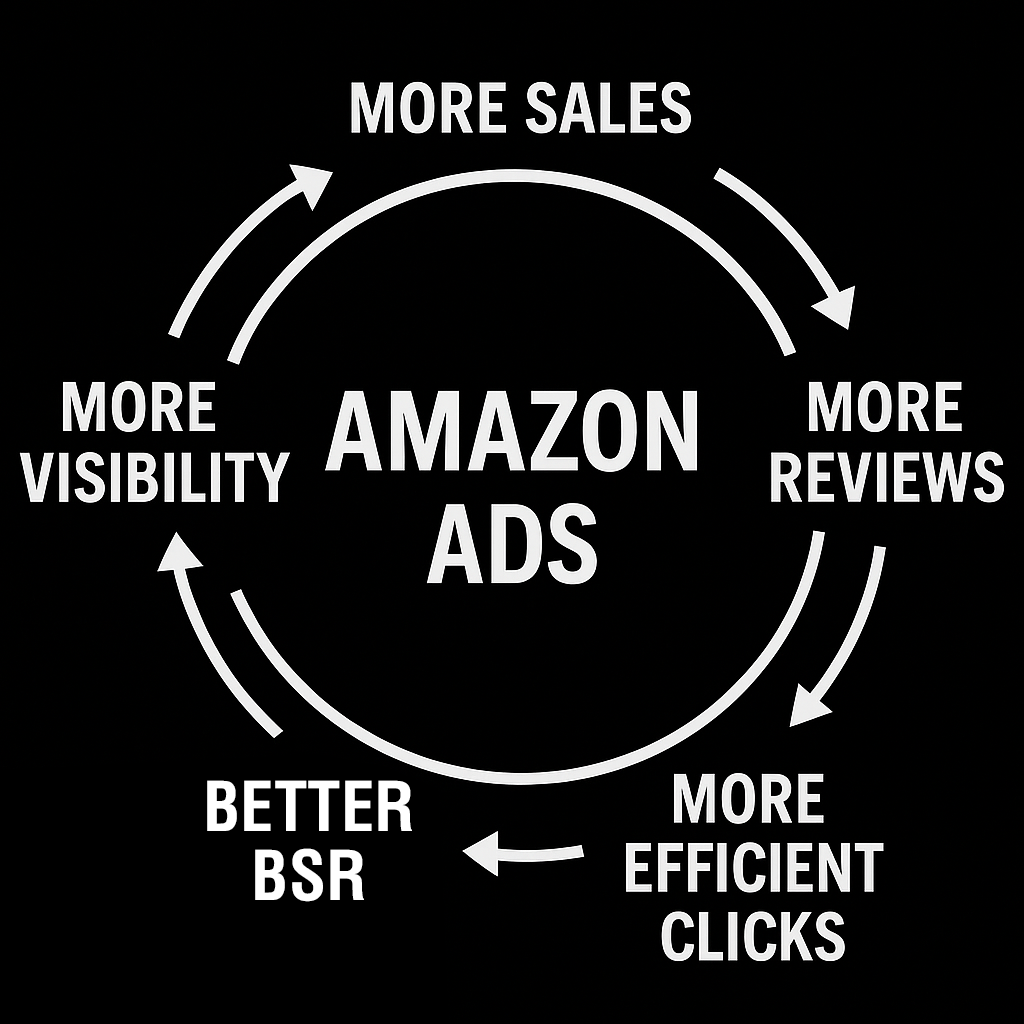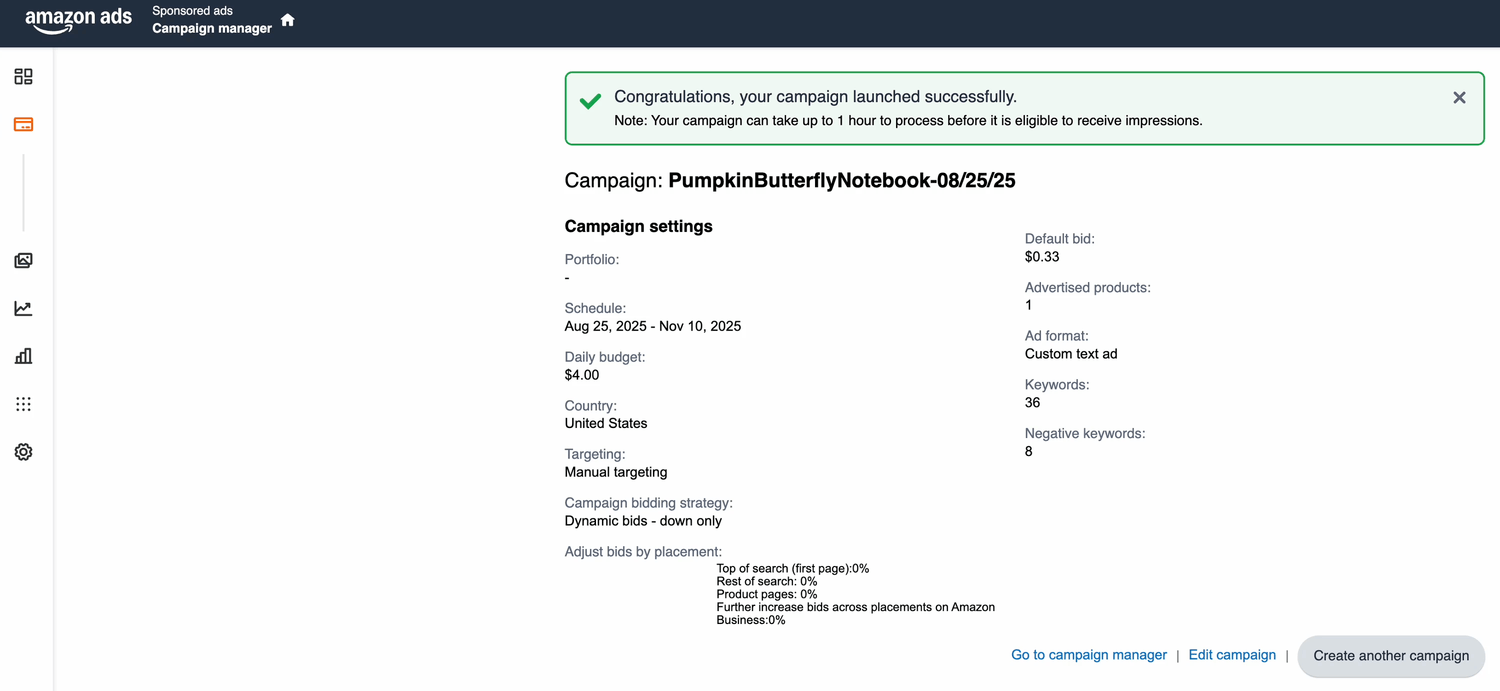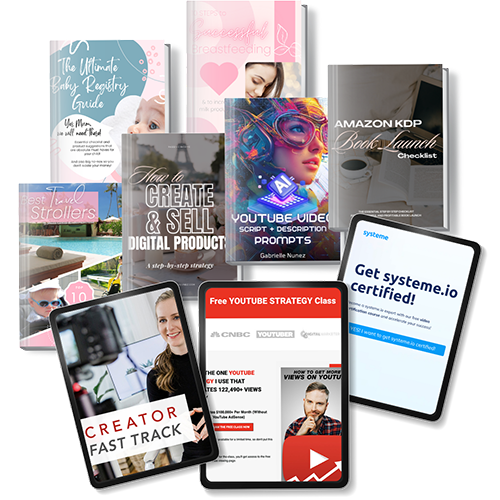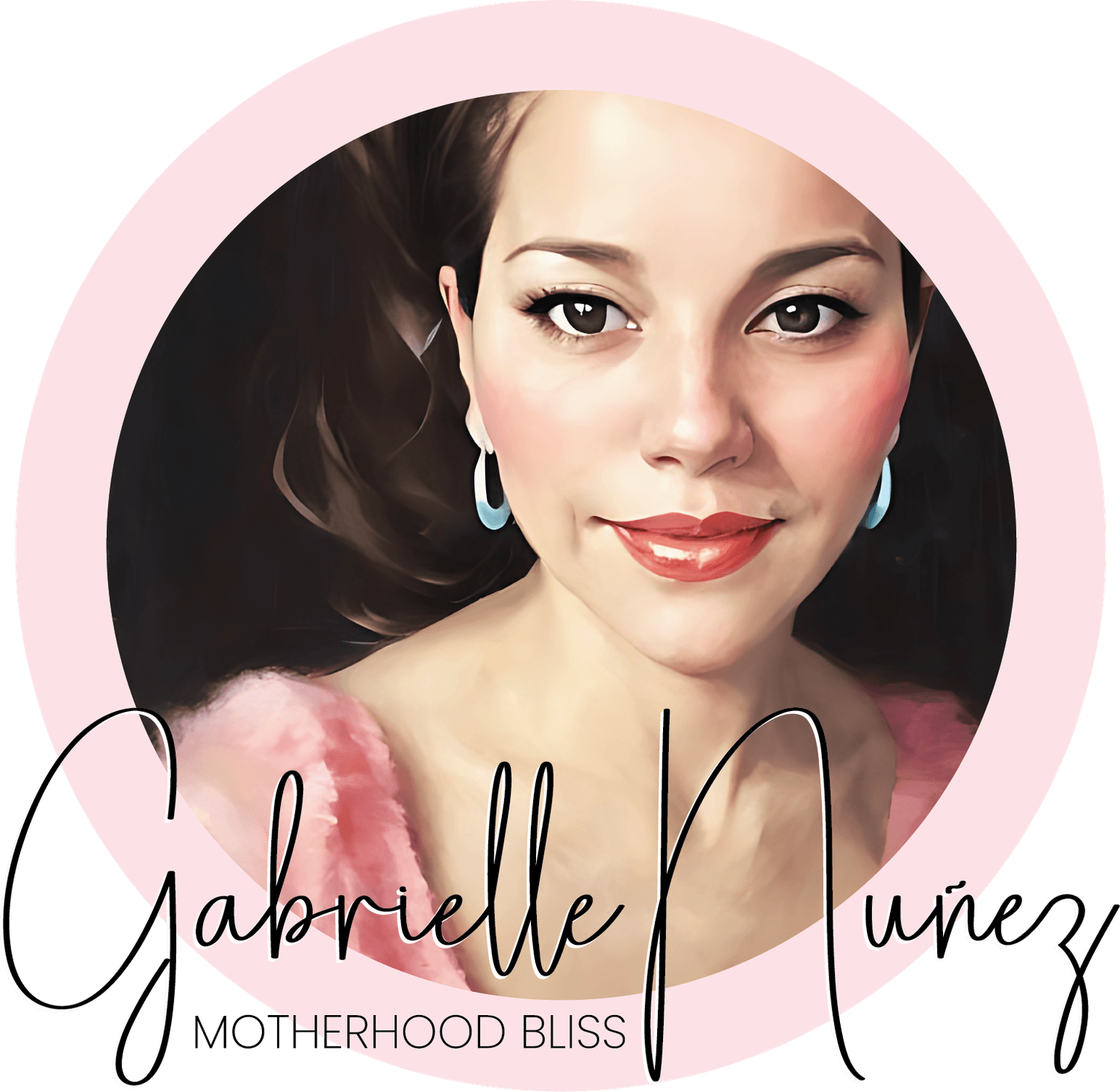The Blog
How to Set Up Amazon KDP Ads Without Burning Money
A Step-by-Step Low Ad Cost Strategy That Actually Works
Running Amazon Ads for your KDP books doesn't have to drain your bank account. I've discovered a proven strategy that increases book visibility, generates thousands of impressions, improves your bestseller ranking, and drives consistent sales while keeping costs incredibly low.
Let me share exactly how I've transformed my book's performance using a budget-friendly approach that gets real results.
My Results: From Million Rank to Under 100K BSR
I started running ads for one of my first high-content books in January of 2025, following a strategy recommended by Sean Dollwet with my own tweaks. The results have been remarkable, and I'm excited to share the specifics with you.
My approach is conservative but effective. I only spend between $0.25 to $0.29 per click because I didn't want to risk a lot of money without knowing if it would work. My daily spend is set at just $2, and Amazon doesn't even use up those $2 every day.
But here's the magic: running ads has activated an ongoing flywheel that makes my book rank better and better every day.
It's a complete snowball effect. The more the KDP ads learn about my book and the keywords that work, the more efficient my campaign becomes. More sales lead to a better BSR (bestseller rank), which means better positioning on the first page of search results.
My book's BSR went from the initial million ranking that we all get to now being under the 100K BSR that indicates a good-selling book. This happened very quickly, starting from the very first month.
I should mention that my book performed well organically in its first month, earning $77 in royalties before I even started running ads. It proved itself profitable and successful, which is when I felt ready to launch ads to scale my income further.
When I first started running ads, my ACOS (ad cost) was around 40%, which isn't bad for the first month. Now I'm down to an optimized ad cost of 8.9%, which represents a very efficient campaign.

Looking at my year-to-date numbers from the beginning of 2025 until mid-August, I've only spent $44 in ads with just a few orders generated directly through those ads. But the impact that running ads has had on this book's overall success is totally worth it.

Surprising Fact: Why Low Ad Orders Don't Mean Failure
Many people think that if you're not getting tons of orders through ads, something's wrong. That's not the case at all.
When you run ads through Amazon KDP, you're teaching both the Amazon KDP ads algorithm and the general Amazon algorithm what your book is about. This helps Amazon position your book better to get more organic sales. Combined with the support of more book reviews, you rank better, get more sales, and gain more credibility.
This creates a powerful flywheel effect: more sales lead to more reviews, which lead to more efficient clicks on your ads. This means the right people are clicking your ads, so you're not wasting money (remember, you only get charged when someone clicks). More sales improve your BSR, giving you better listing positions, probably on the first page results, which generates even more sales.
Over time, the Amazon KDP ads algorithm becomes incredibly efficient. Even though I get thousands of impressions for only $2 daily, only the right people click, and these clicks result in sales. I'm not burning money through my ads, which means more exposure for your book without wasting your budget.

When to Take the Next Steps
Once you reach the point where your campaign is running efficiently like mine, you're ready for optimization:
Run An Automatic Ads Campaign
Sean Dollwet recommends doing this after two weeks of running ads. I chose not to do it immediately, letting my manual ads run longer, and I think waiting helped improve my campaign's efficiency. Now I feel ready to add an automatic campaign.
Optimize Your Ad Campaign
I do this slowly and methodically. Every month, I review which keywords are working and which aren't. I give keywords time because sometimes one you think isn't performing well could become successful the next month. But if two to three months pass and a keyword never gets clicks or keeps getting clicks without generating orders, I deactivate it.
This way, you keep only your best-performing targets. When setting up campaigns, you can target keywords or target successful books similar to yours so their audience discovers your book too.
Amazon has made campaign optimization easier with updates to the campaign manager. There's now a targeting performance section where you can click on "Top Performance targets with sales," then "View Filtered Data for details." This shows only your top-performing targets, and you can filter by orders, clicks, or impressions.
Here's something I wish I'd known from the start: you don't need tons of keywords to succeed. Using just ten keywords is often enough for a successful campaign. You can experiment with broader keyword ranges to find the best performers, then eliminate the ones that aren't working.
Increase Your Daily Ad Spend
Once your campaign is optimized, you're ready to increase your daily budget. Don't increase your cost per click! You can continue advertising for $0.25 per click. Instead of spending $2 per day, increase to $5 or $10 per day, or even more if your budget allows.
Step-by-Step Campaign Setup
Let me walk you through setting up your campaign:
Step 1: Campaign Type
Select "Sponsored Products" and create your campaign.
Step 2: Ad Format - Custom or Standard
Choose between:
Custom text (allows you to add wording to your ad)
Standard ad (no additional wording)
Step 3: Product Selection
Choose which books you want to advertise. You can select multiple books, but I recommend starting with one.
Step 4: Targeting Campaign Type - Manual or Automatic
Choose "Manual" targeting. I don't recommend running an automatic campaign before teaching the ads algorithm what your book is about through a manual campaign.
Step 5: Targeting Method
Choose "Keyword targeting." I haven't been successful with product targeting—it barely got clicks, and when it did, I didn't get sales. I actually deactivated that campaign entirely. You can run a separate campaign for product targeting if you want to test it.
Step 6: Keyword Entry
Choose "Enter list" rather than using Amazon's recommendations. I get my keywords using the Self-publishing Titans Pro extension, looking for keywords that are highly searched with very few results on the search page. This gives my book the best exposure with high-potential keywords that people actually search for.
Step 7: Match Types
Choose all three: broad, phrase, and exact. This allows Amazon to match your keywords in multiple ways. Sometimes Amazon adds "Related to your product category"—I remove this because I'm not sure how it performs and don't want to waste money on random keywords I haven't researched.
Step 8: Bid Amount
Choose "Custom bid" and set all keywords to $0.25 - $0.33 per click. Don't forget this step! I made this mistake initially leaving the "Default Bid" and had trouble finding where to bulk change the bid amount later.
Step 9: Negative Targeting
This prevents your book from showing up for wrong keywords like "free books" or "discounted books." I use negative phrase targeting with a list of words I don't want my book associated with. This reduces ad spend significantly.
Step 10: Creative Text
Submit text for your ad that creates emotional connection, offers transformation, and includes relevant keywords. If you're struggling with the character limit, ChatGPT can help create compelling ad copy. View my video to learn how.
Step 11: Bidding Strategy
Always choose "Dynamic bids down only" if you don't want Amazon ads to spend more than you intend. This fantastic option sometimes gets clicks for less than your set bid amount! Leave "Bid adjustments" alone.
Step 12: Campaign Settings
Create a relevant name including your book title and start date. Set your start date and end date (if applicable—my ongoing campaigns don't have end dates, but seasonal books do). Set your daily budget. I started with $5 daily and increased to $7 once optimized.
Want to see this guided step-by-step process on-screen? Watch my video here.
Remember, Amazon rarely spends your full daily budget.
But budget carefully: multiply your daily spend by 30 days to see your monthly commitment, though you'll spend much less in reality.
Final Steps & Campaign Approval
Save as draft if you need to gather more information, or publish immediately if you're ready. Amazon takes 24-48 hours to approve campaigns; they check for inappropriate content and other guidelines.
I like scheduling campaigns to start three days after setup, so once approved, they go live without issues.

Key Differences in My Strategy
While Sean Dollwet recommends running keyword campaigns for two weeks before switching to automatic, I let mine run longer. This allowed me to optimize my keyword campaign thoroughly without needing to set up an automatic campaign immediately.
Several months later, with my ad cost dropping from 40% to an incredible 8.9% in August, I now feel ready to add an automatic campaign. This signals that my manual campaign is highly efficient, and the Amazon Ads algorithm understands my book perfectly.
The Bottom Line
Setting up Amazon Ads might feel intimidating, but it's actually straightforward once you understand the process. The key is starting conservatively, letting the algorithm learn, and optimizing based on real performance data.
My approach proves you don't need to spend hundreds of dollars to see meaningful results. With patience and the right strategy, you can create a profitable advertising campaign that enhances both your paid and organic sales.
The flywheel effect is real, and once it starts spinning, your book's success compounds month after month. Start with small budgets, focus on teaching the algorithm about your book, and gradually scale as you see positive results.
Your books deserve to be discovered by readers who will love them.
Amazon KDP sponsored products campaigns, when done right using this comprehensive advertising strategy, can be the bridge that connects your books with the right audience without breaking your budget.
Useful Resources
If you found this strategy helpful, you might also want to check out:
This video about my pre-launch and post-launch strategies that helped my book earn $77 organically in its first month
This video about happened with my first published books and the lessons I learned
Self-publishing Titans Pro for finding high-potential, low-competition keywords
Gemsy for getting more book reviews to boost your rankings
My Amazon KDP Video Playlist, with many self-publishing tutorials and tips!
This page with my complete list of tried & true, proven and curated collection of KDP tools for authors
These tools and strategies work together to create a comprehensive approach to book marketing that doesn't require huge budgets; just smart, consistent effort.
Free eBooks!

And get access to other free downloads, masterclasses and more! Just enter a valid email below.
You can opt-out anytime.
Comments?
My Instagram Feed
Newsletter
Stay in the loop for new videos and special offers! And receive useful tips. Opt-out anytime.
Created with Systeme.io - Click to build yours for FREE today!





